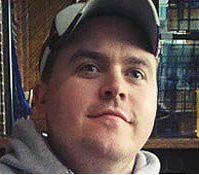Social Media in Committing a Crime
Today a man, reportedly upset over a negative job situation, used social media to plan and carry out a shooting of a TV news crew in Moneta, VA. The man came up on WDBJ 7 reporter Alison Parker, who was interviewing of Vicki Gardner, a local Chamber of Commerce chairperson. In a video made by the gunman, he points the gun at Alison, calls her a name, and then lowers the gun. He seemingly waits until the cameraman has his camera on her, then opens fire. Alison and Adam were both killed, while Vicki was hospitalized, reportedly with a gunshot to her back. The shooter flees, and then posts the video to Twitter.
Social Media in Responding to a Crime
The use of social media during this incident highlights the many pluses and minuses of social media. When it happened, the news of what happened spread quickly, mainly due to Twitter and Facebook. The shooting occurred right before 7:00am Eastern, and by noon the identity of the shooter was known. While the use of social media to aid in communication seems a natural use of its capabilities, this must be tempered with the loss of context that often accompanies near-instant communication.
Many news outlets censored the footage of the interview and shooting, but the shooter had taken his own video and posted it to Twitter. From there it went to Facebook and other social media, giving people unedited access to the carnage. Whether this is good thing or not is for another time. However the importance of social media cannot be over-emphasized.
Social Media in Safety Planning
Anyone responsible for the safety of others should incorporate the uses of social media into their safety plans. It is a tool, and should be used as such. Planners should also prepare for the negative effects of social media, mainly disinformation and lack of context. Media protocols can be as important in responding to an incident as any other protocol, as the wrong information can increase the difficulty in responding to the incident.
Information travels so much more quickly today than ever before. We safety planners need to get a handle on this concept and use it to our advantage, or it will surely use us.
As with any such tragedy, let’s take some time to care for the wounded and grieve for our losses. Then let’s learn what lessons we can and make ourselves better.

